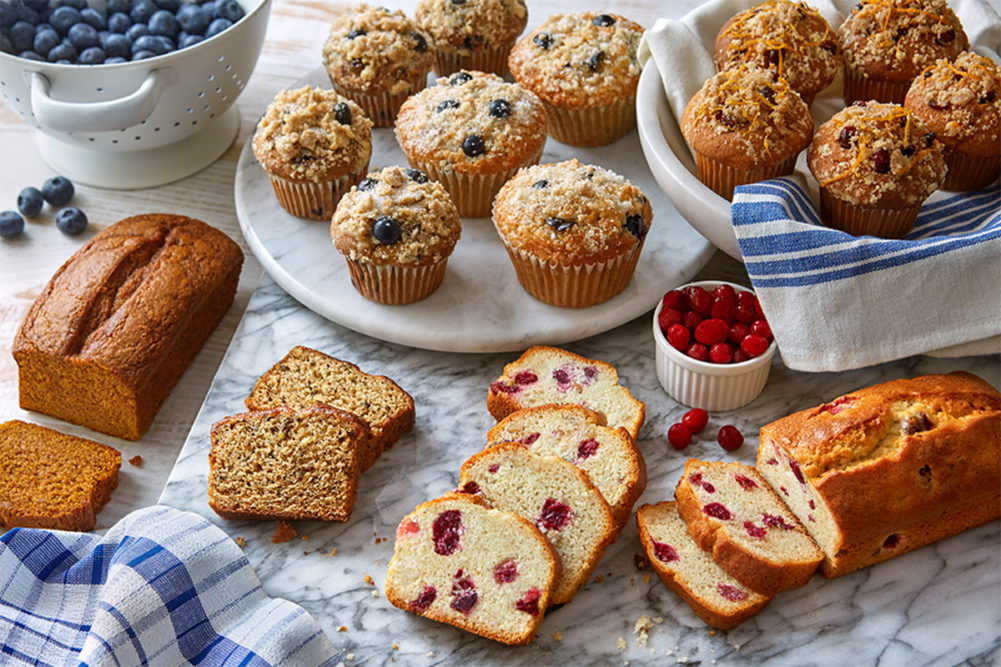Bakers have several different strategies they can employ to lower saturates in their formulations without affecting finished product quality. The most straightforward way is in the fat itself.
“In less demanding applications, such as certain cookie and cake varieties, bakers can swap out a portion of their current fat product with a lower saturate, liquid oil in order to reduce saturated fat levels,” said Andrea Weis, customer innovation application specialist, AAK USA. “In more demanding applications, such as biscuits and pastries, the ideal way to decrease saturated fat in a formulation is to use specially developed shortening and margarine products that are designed to reduce saturated fat levels without compromising on functionality.”
Ms. Weis also suggested that in the case of all-butter formulations, bakers can replace some of the butter with margarine to bring down saturates.
“Traditional dairy butter contains 63% saturated fat while AAK’s Cisao 82-85 margarine contains 49% saturated fat and is formulated with a blend of palm and soybean oils,” she said. “Through the selection of specific fat and oil fractions from a variety of plant sources, AAK develops shortening and margarine products that can help formulators meet specific nutritional goals for their products.”
Blending oils is a common way to thread that needle of lowering saturates and still providing functionality.
“Every input oil has two elements: a saturate fat and a polyunsaturated component,” explained read on the Nutrition Facts panel,” said Roger Daniels, vice president, research, development, innovation and quality, Stratas Foods. “Blends of oils that might be naturally lower in sat fat is a way to arrive at a shortening to get the functionality that you need without the high degree of saturated fat.”
To do this effectively, formulators should be aware of the saturate levels of various input oils. Canola sits at about 9% saturated fat, soybean about 15%, while lard and palm are at the higher end with 36% and 47%, respectively.
“Blending liquid oils that have a high level of mono- and poly-unsaturated fatty acids, with fats that contain a higher level of saturated fatty acids, is a great way to reduce overall saturated fat content,” said John Satumba, PhD, Cargill’s global bakery technical lead and regional director for North America.
High oleics bring added stability to the game, which can benefit shelf life.
“When reducing saturated fat levels, formulators can take advantage of highly unsaturated oils that have increased oxidative stability, such as high oleic sunflower oil,” Ms. Weis explained. “Oils that contain greater levels of high oleic acid are more stable and don’t require the addition of an antioxidant, helping to make cleaner ingredient statements and healthier nutrition panels.”
[Related reading: Fat solutions can provide nutritive benefits]
Beyond blending, enzymatic interesterification provides formulators another way to develop low saturate, functional fats.
“Interesterification allows you to rearrange the presentation of saturates to unsaturates to affect physical changes in the blend so the physical blend of oil and fat will look different after interesterification than if you physically blend,” Mr. Daniels explained.
Rather than a simple blending of oils, this process rearranges the molecules of two shortenings or oils to create an entirely new homogenous ingredient.
“It allows you to take two extremes and create a product that has completely different characteristics,” said Dennis Strayer, oils consultant for the United Soybean Board.
Bakers may need to look outside of fat solutions to replace lost functionality, however, and there are options in that case. Yangling Yin, PhD, director of RD&A, ingredient solutions, Corbion, suggested in cases where the fat provides too much functionality, fat replacers can help bakers reduce total fat content while still maintaining the finished product’s desired texture.
Fat replacers, like EPG from Epogee, can address saturated fat reduction without lost functionality. EPG enables bakers to reduce labeled grams of total fat and saturated fat by 92% for each unit of fat replaced.
“By employing the EPG technology, formulators are able to maintain all the functionality of saturated fats while reducing calories and labeled grams of total and saturated fats,” said Jayme Caruso, chief commercial officer, Epogee.
Anita Srivastava, PhD, certified food scientist and senior technical service manager, bakery, Kemin, pointed out the functionality provided by carbohydrates, gels and gums, and whole foods that can replace lost functionality when saturates are reduced.
“Carbohydrates like maltodextrose, polydextrose and plant fibers have good water binding properties, mimic the viscosity of fat, form paste and adjust viscosity of batter or dough,” she said.
Some gels and gums can also mimic the viscosity of the fat, while whole foods like avocado, banana and legumes can lend their own oils, starches and proteins to a formulation.
As with all reformulating and threading the needle between the goal and functionality, it’s important to look at the formulation as a whole and all the tools available to the formulator.
“It starts with understanding the baker’s pain points in the whole system and how our fats and oils interact with the other ingredients,” Dr. Satumba said. “Once we understand the drivers behind the need to reformulate then we can look at the opportunities to lower levels of saturated fat.”
By doing so, bakers can find the solution that meets their nutritional goals without compromising on their final product quality.
This article is an excerpt from the April 2021 issue of Baking & Snack. To read the entire feature on fats & oils, click here.





